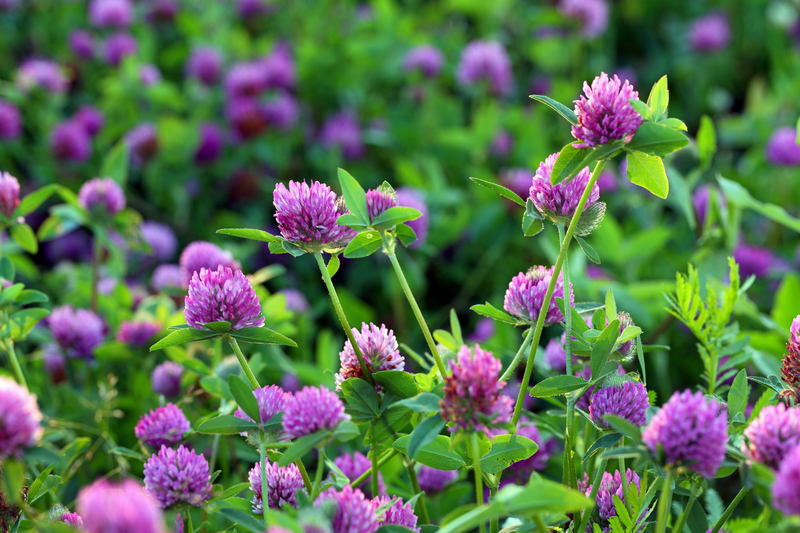Revitalize That Neglected Garden: Steps to Start With
Posted on 09/06/2025
Revitalize That Neglected Garden: Steps to Start With
Is your backyard overgrown, choked with weeds, or just plain lifeless? You're not alone! Many homeowners and renters find themselves facing a neglected garden--for a variety of reasons. The good news is that every neglected yard holds the potential to become an inviting oasis. Whether you've moved into a new home or simply let things slip during a busy period, you can breathe new life into your outdoor space.

Why Revitalize a Neglected Garden?
- Boosts property value and curb appeal
- Creates a relaxing, enjoyable outdoor space
- Encourages biodiversity and healthy ecosystems
- Supports physical and mental well-being
Taking those first steps might seem overwhelming, but transforming a forgotten backyard into a thriving, beautiful garden is absolutely within your reach. Here's how to get started, one manageable stage at a time.
Step 1: Assess the Situation
Take a Careful Inventory
Before you dig in, walk around your garden and make notes of what you see. Be honest about the current state of things. Take photos from different angles to help visualize the potential.
- Identify what's salvageable (plants, shrubs, structures)
- Notice problem areas (heavy weed growth, bare patches, compacted soil)
- Look for hazards (broken tools, debris, unstable fences, sharp or toxic plants)
If you spot any diseased trees, substantial overgrowth, or hazards you're unsure about, it might be wise to consult a professional arborist or landscaper for advice.
Step 2: Clear and Clean
This is where you get your hands dirty! Clearing a neglected garden is about gaining a blank canvas for your revitalization project.
Essential Clean-Up Tasks:
- Remove all litter and debris: Discard old plant pots, rusted tools, plastic bags, and any other trash.
- Cut down overgrown grass and weeds: Use a scythe, shears, or weed trimmer depending on the space and severity.
- Uproot invasive weeds and dead plants: Dig out roots to prevent regrowth and avoid simply cutting them back.
- Compost organic matter where possible: Start a compost bin or pile for healthy garden waste. Avoid adding weeds with seed heads or diseased plants to your compost.
- Trim back shrubs and trees: Remove dead wood, broken branches, and overgrown stems.
Take regular breaks. Cleaning a large, neglected garden can take several days--or even weekends. Remember, transformation happens step by step.
Step 3: Rejuvenate the Soil
Healthy, living plants need healthy, living soil. Years of neglect often mean your soil is compacted, depleted, or unbalanced. This stage is often the most important part of your overall garden restoration.
How to Enrich Neglected Garden Soil
- Test your soil: Pick up a test kit at a local nursery or send a sample off for a professional analysis. This tells you pH levels and nutrient content.
- Fork and aerate the soil: Use a garden fork to loosen compacted earth. Don't dig too deeply unless you're preparing for planting beds.
- Mix in organic matter: Add well-rotted compost, manure, or leaf mold to restore fertility and structure.
- Address drainage issues: If water pools after rain, consider raising beds or installing drainage channels.
Healthy soil is teeming with life--earthworms, beneficial microbes, and fungi that support plant growth. Investing in soil improvement now pays off for years to come.
Step 4: Plan Your New Garden Layout
With a clean slate, it's time to envision what your restored garden will become. This is your opportunity to match your aspirations and needs--whether it's a productive vegetable garden, a wildlife paradise, or a peaceful retreat.
Elements to Include in Your Garden Plan:
- Seating areas--Think patios, benches, or hammocks for relaxation.
- Paths and walkways--Define routes using gravel, stone, or wood chips.
- Flower borders and beds--Create vibrant, seasonal color displays and habitats for pollinators.
- Vegetable patches or herb spirals for growing your own produce.
- Water features--Even a simple birdbath adds tranquility and wildlife interest.
- Compost and tool storage corners--Make maintenance easy and efficient.
Sketch out a simple design on paper or use a free online garden planner. Factor in sun exposure, shade, wind, and existing features. A well-thought-out plan prevents wasted effort and resources later.
Step 5: Choose and Plant Wisely
Now for the fun part--bringing in the new! Unless you're an experienced gardener, stick with low-maintenance, resilient plants for the first year. Native species are often best, as they're adapted to your climate and pests.
Tips for Smart Plant Selection:
- Match plants to the spot: Choose sun-lovers, shade-tolerant, or moisture-proof varieties as appropriate.
- Layer heights and textures: Arrange tall plants at the back, mid-sized in the middle, and groundcovers at the front for visual interest.
- Add a few statement plants: These could be architectural shrubs, striking perennials, or a beautiful small tree.
- Use mulch: Apply bark chips, straw, or compost to suppress weeds and retain soil moisture.
- Space plants correctly: Avoid overcrowding, giving each plant enough space to grow to maturity.
Don't forget personal touches--add solar lights, ornaments, or create a small wildlife pond.
Step 6: Establish a Simple Maintenance Routine
A revitalized garden needs lasting care to stay healthy and beautiful. The secret is regular, light maintenance versus infrequent, heavy "graft."
Maintenance Checklist for Your Refreshed Garden
- Watering: New plants need consistent moisture, especially in their first season.
- Weed control: Pull weeds regularly before they go to seed.
- Pruning: Trim back shrubs and perennials after flowering or when they outgrow their space.
- Mulching: Top-up mulch annually to improve soil and stop weeds.
- Feeding: Use slow-release organic fertilizers for hungry plants in spring and midsummer.
- Regular checks: Inspect for pests, disease, or damage from weather and act quickly.
A simple 20-minute routine, once or twice a week, will keep your garden flourishing.
Avoid These Common Mistakes When Reviving a Forgotten Garden
- Doing everything at once. Tackle one section or project at a time to avoid burnout.
- Ignoring the soil. Healthy plants start with healthy soil--don't skip amending!
- Overplanting. It's better to start sparse and fill in later than to crowd your beds.
- Choosing fussy plants. Opt for tough, easy-care varieties for your first attempt.
- Neglecting maintenance again. Set reminders and make caring for your garden enjoyable.
Bonus Tips to Rejuvenate Your Overgrown Yard
- Get the family or friends involved. Gardening together makes labor easier and more fun.
- Go organic. Avoid chemical sprays and fertilizers for a healthier, wildlife-friendly garden.
- Upcycle and reuse. Old containers, pallets, and bricks can serve countless purposes.
- Keep a garden journal. Track progress, jot down ideas, and learn from each season.
- Celebrate success! Take before-and-after photos, host a picnic, or simply relax and enjoy your new outdoor haven.

The Environmental and Personal Benefits of Revitalizing a Neglected Garden
When you refurbish an abandoned yard, you're not simply improving your own property. You're also contributing to the local environment and your community's wellbeing.
- Increases habitats for birds, insects, and pollinators.
- Improves air and soil quality.
- Reduces stormwater runoff and erosion.
- Provides fresh fruits, vegetables, and herbs.
- Cultivates a sense of pride and accomplishment.
- Offers a peaceful retreat for relaxation and exercise.
Resources to Help You Revive Your Garden
There is plenty of guidance available for every phase of your garden restoration journey:
- Books on gardening, permaculture, and landscaping
- Local gardening clubs and community gardens
- Online forums and social media groups (try searching for "garden rescue" or "neglected garden transformation" for inspiration!)
- Seed exchanges and plant swaps
- Ask at your local nursery for soil tests and plant advice
Final Thoughts: Your Garden Comeback's First Steps
Turning a neglected backyard into a flourishing escape is one of the most rewarding projects you can take on. By following these practical steps to revitalize your garden--from clearing debris and nurturing soil to thoughtful planting and regular care--you create a green space that lifts your spirits and enhances your home's value.
Every garden, no matter how unruly or barren, holds the potential for vibrant life. Start small, stay patient, and watch as every hour invested grows into abundant beauty.
If you've brought a neglected garden back to life, share your tips and triumphs in the comments below. Your experience may help someone else take their first step toward a greener, more joyful garden.

